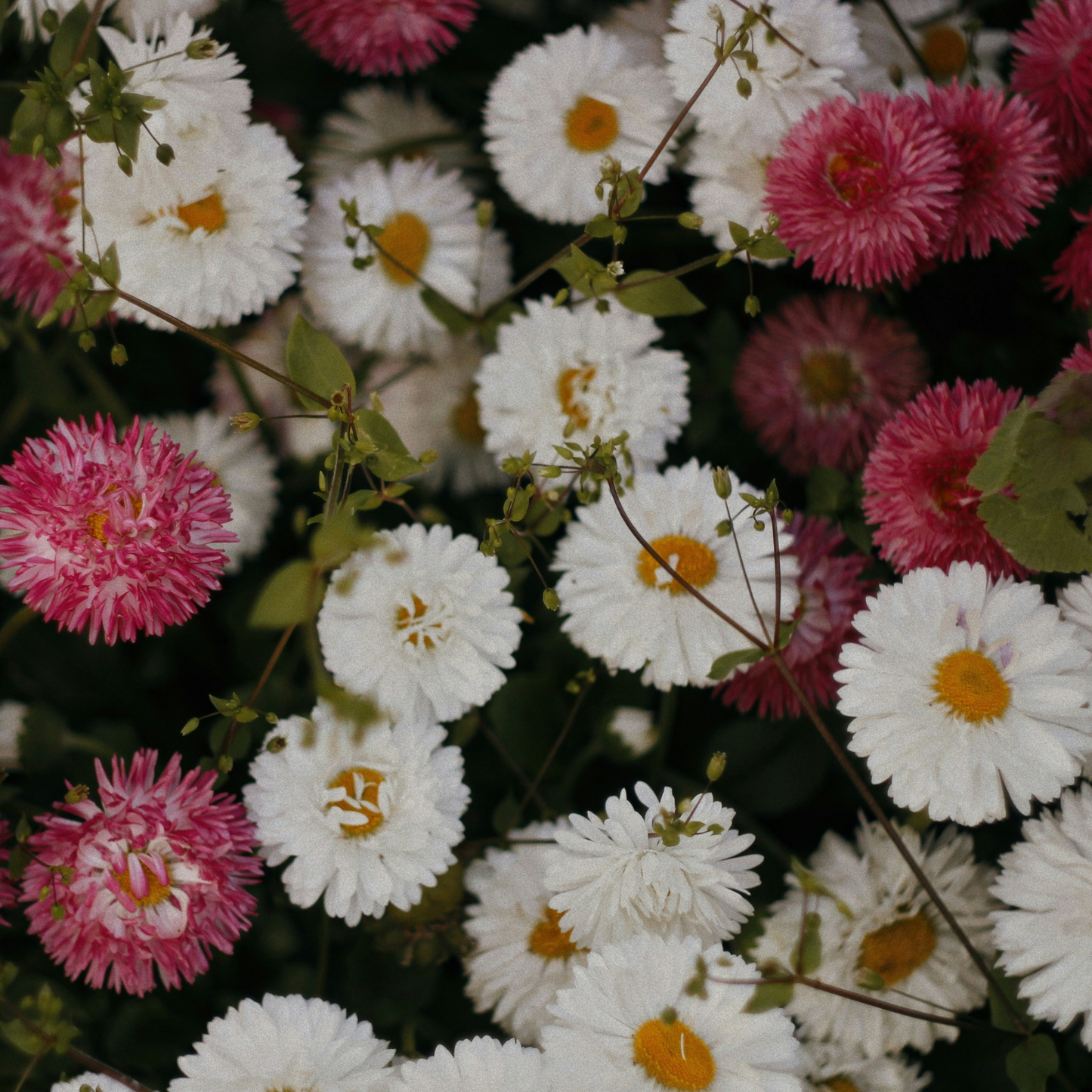JONQUIL
Bellis Habanera Own Mix - 10 Seed Pellets
Bellis Habanera Own Mix - 10 Seed Pellets
Couldn't load pickup availability
The Bellis Habanera Own Mix is a charming variety of English daisy (Bellis perennis) that produces double, pom-pom-like blooms in a mix of white, pink, and red colors. It’s perfect for adding color to garden borders, beds, and containers. This hardy perennial is often grown as a biennial or annual in cooler climates.
Here’s a detailed guide to growing Bellis Habanera Own Mix:
Light Requirements
These daisies thrive best in full sun to partial shade. If you're in a region with hot summers, some afternoon shade can prevent wilting.
Soil
Well-draining soil is essential. They prefer loamy, fertile soil enriched with organic matter.
Ideal soil pH is 6.0 to 7.0, which is slightly acidic to neutral.
Planting Instructions
Sowing Seeds Indoors: Start seeds indoors about 8-10 weeks before the last frost date in your area. Use seed trays or pots filled with a light seed-starting mix.
Lightly press the seeds into the soil surface but do not cover them, as they require light to germinate.
Keep the soil consistently moist and maintain a temperature of around 18-21°C.
Germination usually takes 10-14 days.
Direct Sowing Outdoors: Seeds can also be sown directly into the garden in late spring or early fall.
Sow seeds thinly, and lightly press them into the soil surface. Water gently to keep the soil moist until the seeds germinate.
Transplanting Seedlings
Once seedlings have at least two sets of true leaves, they can be transplanted into the garden or larger containers.
Space plants about 15-20 cm apart to allow for growth and airflow.
Watering
Keep the soil evenly moist, especially during the early stages of growth, but be careful not to overwater. Bellis daisies don’t like soggy soil.
Reduce watering slightly once the plants are established.
Fertilization
Apply a balanced, slow-release fertilizer when planting and then once a month during the growing season.
Too much nitrogen can lead to lush foliage with fewer flowers, so use a formula with balanced nutrients.
Temperature and Hardiness
Bellis Habanera daisies are hardy and can tolerate temperatures as low as -6°C.
They are best grown in cooler climates or during spring and fall in warmer regions.
Deadheading and Maintenance
Deadhead spent blooms to encourage continuous flowering.
If grown as biennials, they may not bloom heavily in their first year but will come back strong in their second year.
Pests and Diseases
Watch out for slugs, aphids, and leaf miners. Use organic pest control measures like neem oil or diatomaceous earth if needed.
Ensure good air circulation to prevent fungal diseases like powdery mildew, especially if grown in humid conditions.
Propagation
Bellis can be propagated by dividing mature plants in early spring or by growing from seeds.
Self-seeding is common, so you may find new plants popping up the following year.
Additional Tips
These daisies make excellent cut flowers and can brighten up a vase indoors.
Ideal for border edging or to add color to a cottage garden.
With these care tips, you’ll enjoy the delightful, cheerful blooms of Bellis Habanera Own Mix for seasons to come!
Share


